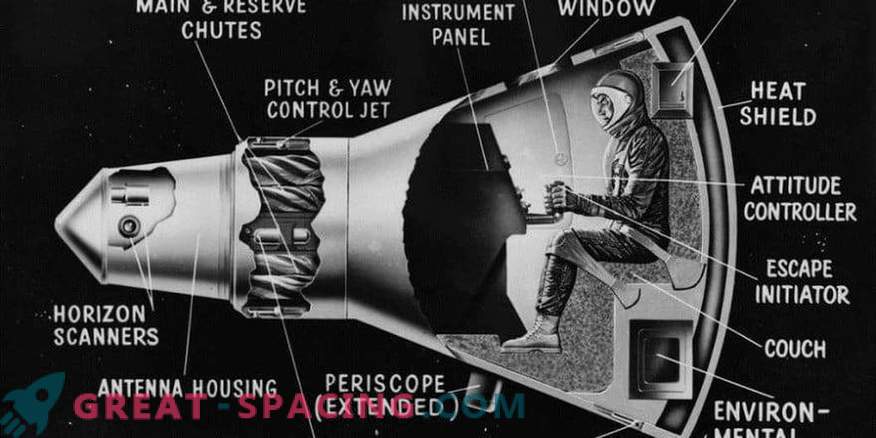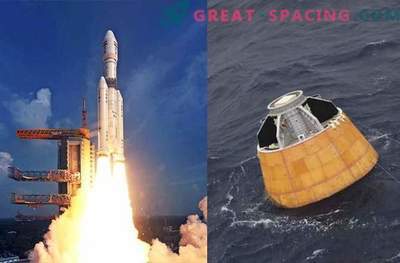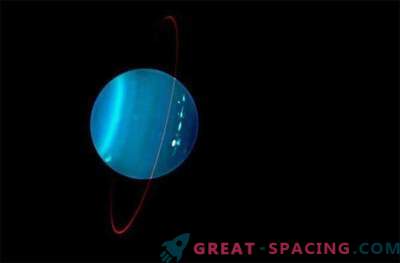
Almost a year after the creation of NASA, the Mercury project was announced - the first American attempt to launch a man into space. The mission proved that people are able to live and work in space. Here is a drawing of the capsule of Mercury (October 24, 1959)
NASA's Mercury project was the first American mission to launch a man into space. In 1961-1963 Six astronauts performed successful single space flights, which allowed doctors and scientists for the first time to observe the influence of the space environment on the human body.
The members of the project were military test pilots in the service who volunteered. Their age was 35-40 years, and due to the limitations of the parameters of the capsule, their growth could not exceed 5 feet 11 inches.
The flights took place in a suborbital or on a low-orbit route and lasted from 15 minutes to 34 hours. During the flight period, astronauts had to try on 20-pound space suits designed to backup the capsule support system and remain fastened to their seats. Doctors monitored temperature, heart rate and respiration to monitor health. At that time there was little information about the possible cosmic influence, so the first flights answered many questions.
The missions of Mercury proved that humans are able to stay in the space environment for more than 24 hours. In addition, the analysis showed that the heart rate and weight loss were associated with wearing a space suit, and not being in weightlessness. This project is also interesting for the modern space industry, as more and more agencies are beginning to think about short-term tourist flights.











































